SMU Data and Models

Employment in Manufacturing, Construction Grows in Past Year
Written by Peter Wright
July 9, 2018
In the last 12 months, manufacturing employment has grown by 2.3 percent and construction employment by 4.1 percent, according to Bureau of Labor Statistics data for June—positive indicators of future steel sales volume.
Table 1 breaks total employment down into service and goods-producing industries and then into private and government employees. Most of the goods-producing employees work in manufacturing and construction, and the components of these two sectors of most relevance to steel people are broken out in Table 1.
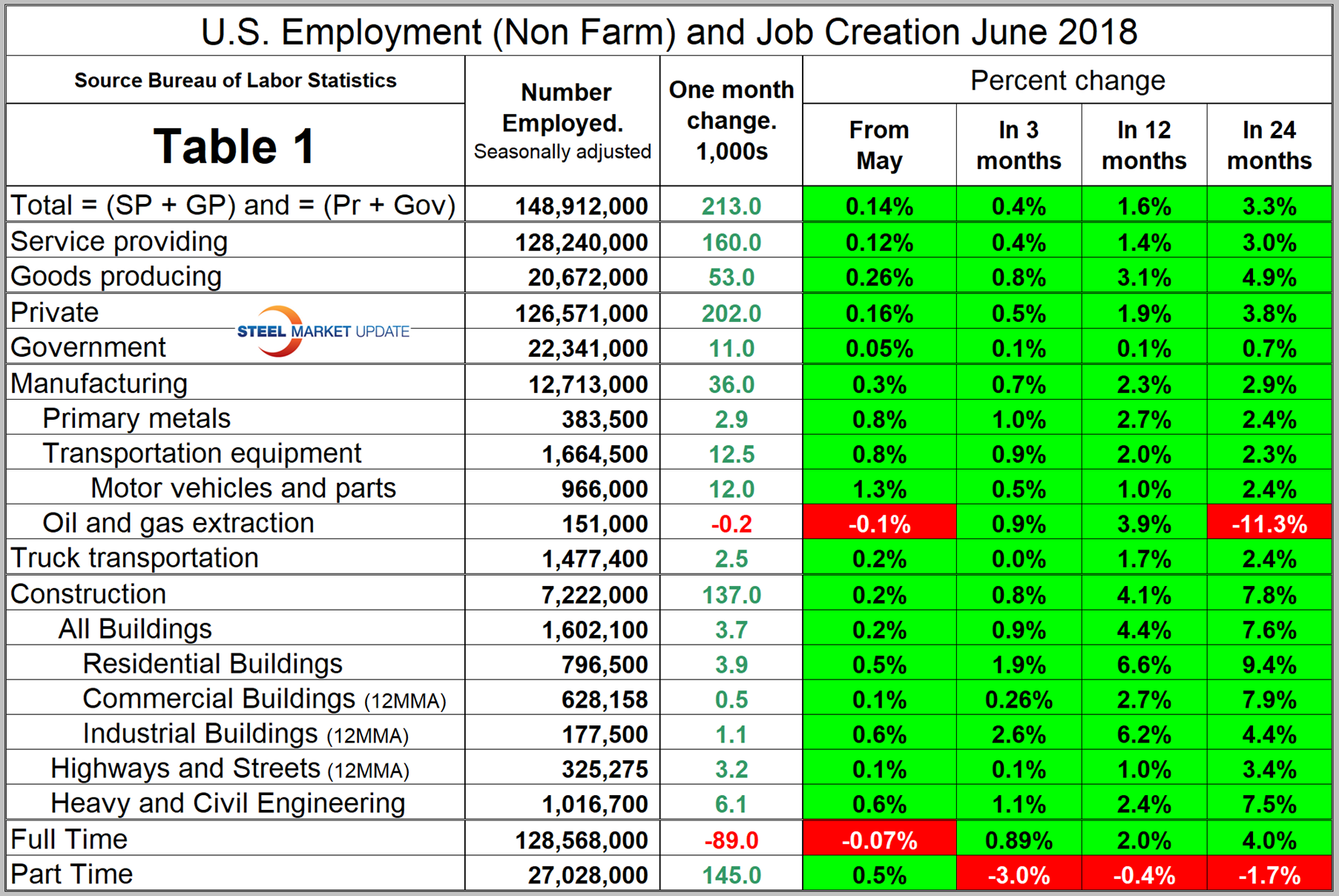
In June, 202,000 jobs were created in the private sector, while government gained 11,000 jobs. The number employed by the federal government decreased by 2,000 to 2.8 million, state government was unchanged for a total of 5.1 million, while local governments gained 13,000, to reach a total of 14.45 million. Since February 2010, the employment low point, private employers have added 19,314,000 jobs as government has lost 135,000 (Figure 1).
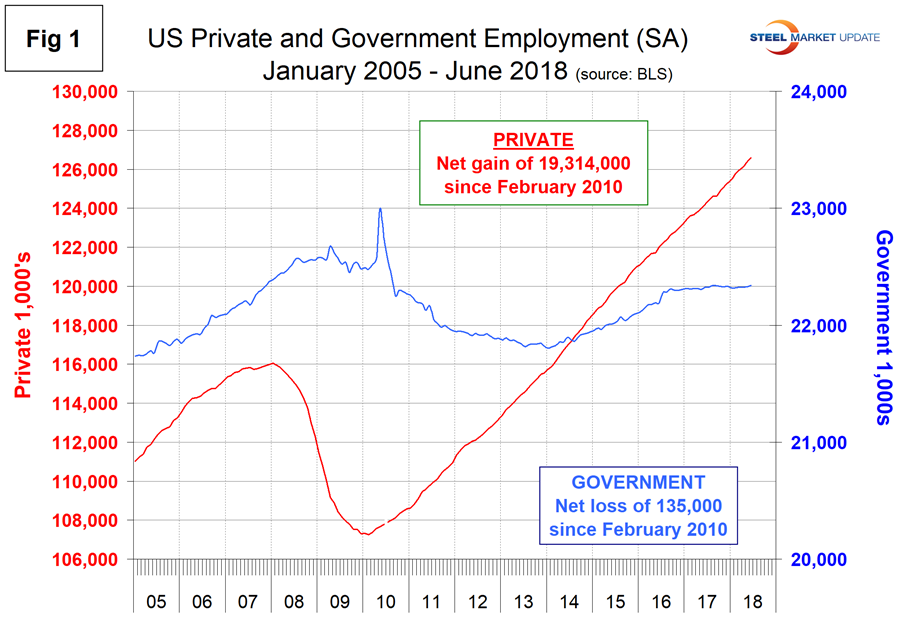
In June, service industries expanded by 160,000 jobs as goods-producing industries, driven mainly by construction and manufacturing, expanded by 53,000, (Figure 2). Since February 2010, service industries have added 16,134,000 and goods-producing 3,045,000 positions. This has been a drag on wage growth since the recession as service industries on average pay less than goods-producing industries such as manufacturing.
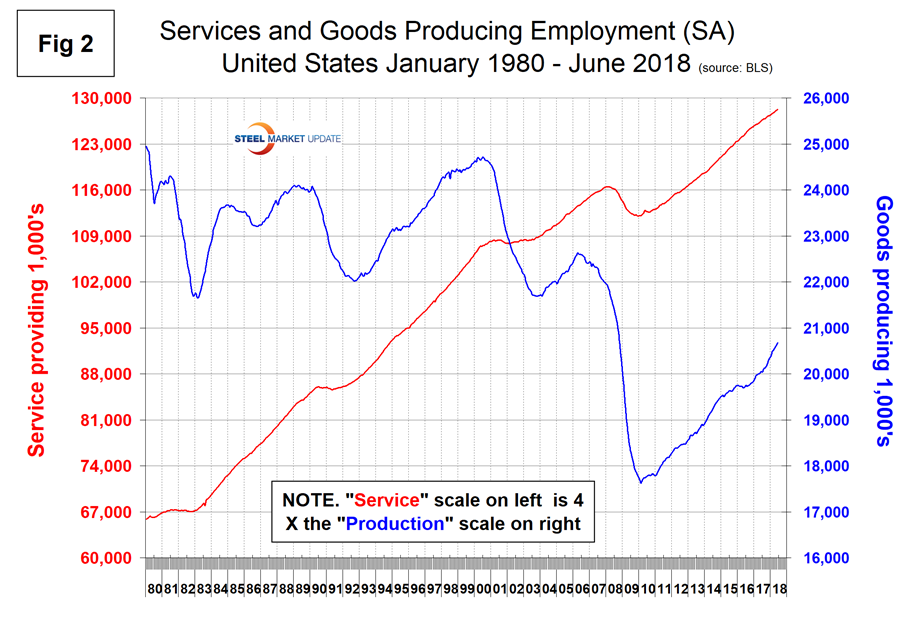
Construction was reported to have gained 13,000 jobs in June after a 29,000 gain in May. Year to date, construction has added 150,000 jobs. According to the Associated General Contractors of America (AGC), construction continues to add jobs faster than the economy as a whole, and the industry is paying premium wages to attract and retain workers. Hourly wages in the industry averaged $29.71, an increase of 2.9 percent year over year.
Manufacturing added 36,000 jobs in June following a 19,000 gain in May and has added 155,000 jobs year to date. Figure 3 shows the history of construction and manufacturing employment since January 2005. Construction has added 1,722,000 jobs and manufacturing 1,260,000 since the recessionary employment low point in February 2010 (Figure 3).
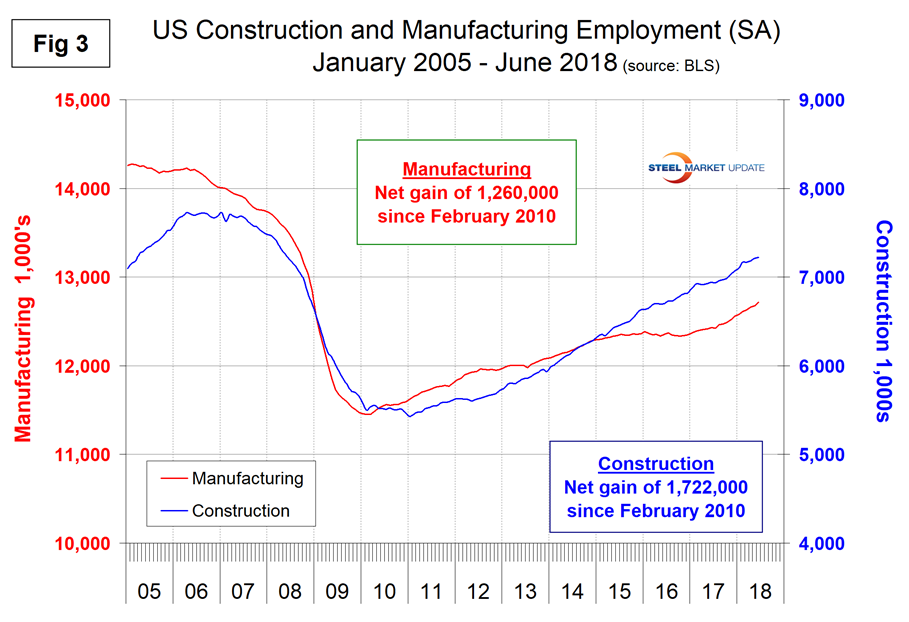
Note, the subcomponents of both manufacturing and construction shown in Table 1 don’t add up to the total because we have only included those with the most relevance to the steel industry.
Table 1 shows that primary metals gained 2,900 jobs in June, and in the last 12 months on a percentage basis was up by slightly more than total manufacturing. Figure 4 shows the history of primary metals employment since January 2003.
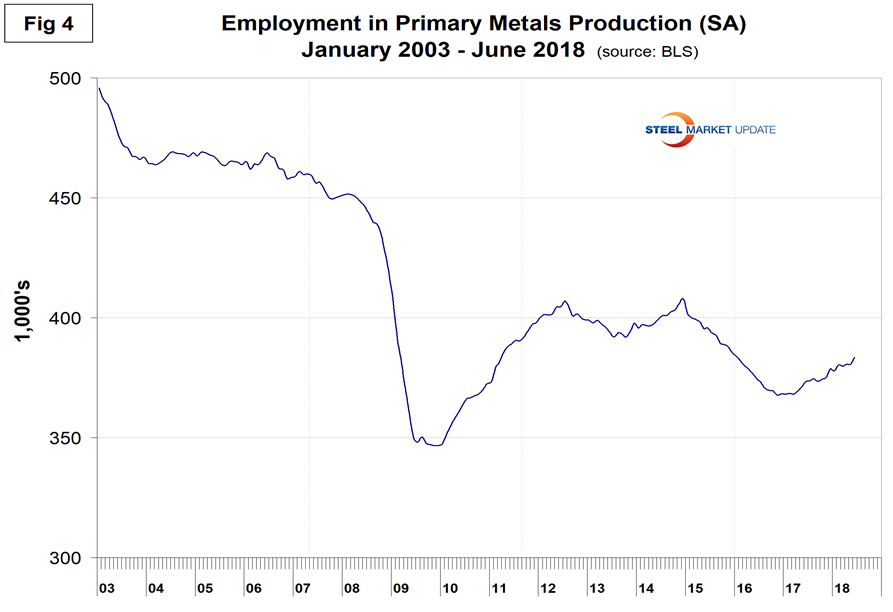
Motor vehicles and parts industries were reported to have gained 12,000 jobs in June. Figure 5 shows the history of motor vehicles and parts employment. The flattening in the last two years is a reflection of U.S. light vehicle sales.
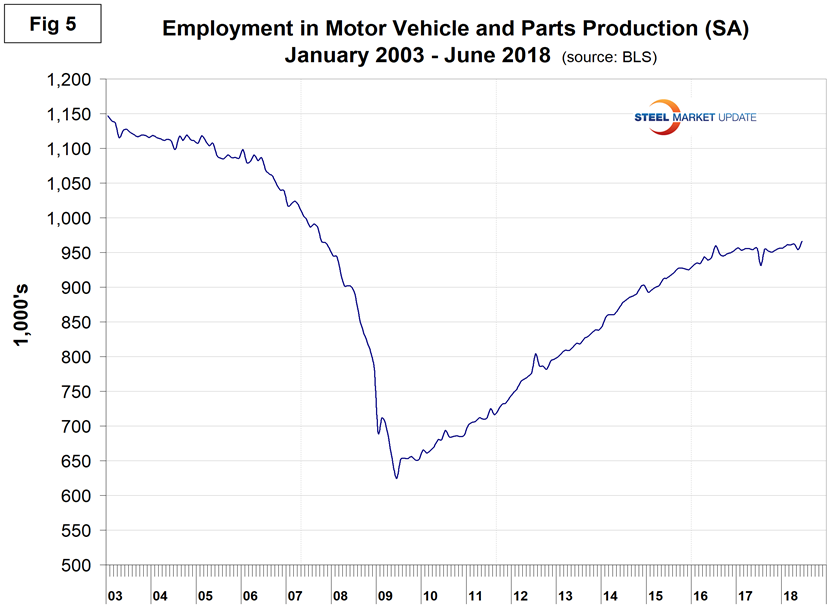
Trucking gained 2,500 jobs in June, 17,100 jobs year to date, and is the highest since our data stream began in January 2003 (Figure 6).
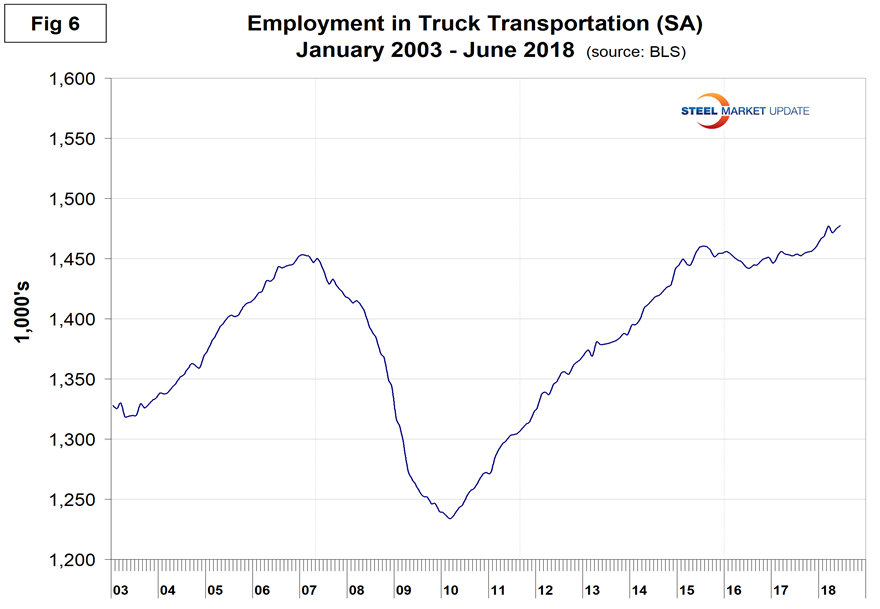
SMU Comment: Employment growth in manufacturing and construction are signposts for steel sales activity and at present look favorable.
Explanation: On the first Friday of each month, the Bureau of Labor Statistics releases the employment data for the previous month. Data is available at www.bls.gov. The BLS employment database is a reality check for other economic data streams such as manufacturing and construction. It is easy to drill down into the BLS database to obtain employment data for many subsectors of the economy. The important point about all these data streams is the direction in which they are headed.

Peter Wright
Read more from Peter WrightLatest in SMU Data and Models

Apparent steel supply remains elevated in July
Apparent supply totaled 8.88 million short tons (st) in July, down 38,000 st from June and 6% higher than the same month last year

HRC vs. prime scrap spread narrows slightly
The price spread between prime scrap and hot-rolled coil (HRC) narrowed by a hair this month, according to SMU’s most recent pricing data.

SMU Scrap Survey: Current Sentiment rises as Future Sentiment falls
SMU’s current Scrap sentiment index increased this month while future sentiment declined, according to our latest ferrous scrap survey data.

SMU scrap market survey results now available
SMU’s September ferrous scrap market survey results are now available on our website to all premium members.

SMU Survey: Sentiment inches up from low levels
SMU’s Steel Buyers’ Sentiment Indices ticked higher this week, according to the latest data from our flat-rolled steel survey.
